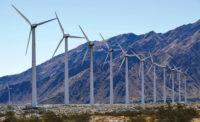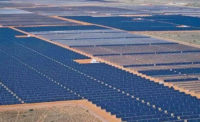For its first year of full occupancy, the nation's biggest energy miser—the nearly two-year-old 220,000-sq-ft Research Support Facility of the National Renewable Energy Laboratory—met its modeled annual energy-use targets, reports the Golden, Colo.-based NREL.
But a market-rate, low-energy-use office building doesn't happen by accident. "It's not going to work unless the owner takes responsibility both in planning and operating the building," says Jeffrey M. Baker, director of NREL operations for the U.S. Dept. of Energy's Office of Energy Efficiency and Renewable Energy.
For the 12 months beginning in February 2011, the building's annual energy-use intensity was 35,400 Btu per sq ft per year, compared to the goal of 35,100 Btu per sq ft per year, says the 77-page "NREL's Research Support Facility: An Energy Performance Update." Details of individual building systems energy consumption versus modeled energy use—for lighting, plug loads, fans and pumps, rooftop solar photovoltaics (PV) for electricity production, heating and cooling and more—are available at http://www.nrel.gov/sustainable_nrel/pdfs/rsf_operations.pdf.
A critical component for success is building occupant involvement. NREL distributes an eight-page guide to aid its 800 occupants in minimizing things like plug loads. Another critical ingredient is the integration of building operators into the construction and commissioning teams, says NREL.
The lab is disseminating information on its office building, from its performance-based design-build acquisition strategy through operations. Workshop material is also available online at http://www.nrel.gov/sustainable_nrel/rsf.html. NREL has also created a how-to manual.
NREL's next goal is annual net-zero-energy use. All the facility's PV systems should be operational in July. "If we continue to perform as we have, we are confident we will meet the goal of annual [NZEU] at the end of a year of measured performance," says Shanti Pless, the lab's senior research engineer. Even with an incomplete PV array, the building was 'net zero' for last July, he says.










Post a comment to this article
Report Abusive Comment